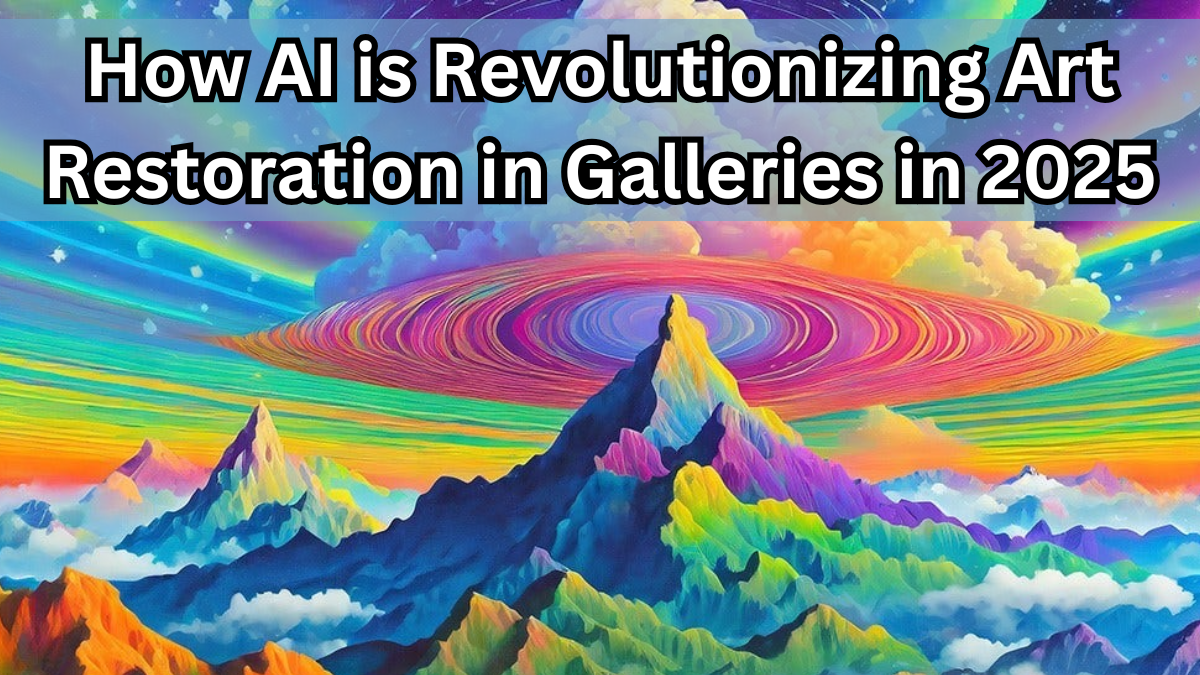In 2025, the world of art conservation is undergoing a profound transformation, thanks to the integration of Artificial Intelligence (AI) into art restoration practices. AI in Art Restoration is not just a buzzword; it’s a game-changer that allows conservators to breathe new life into masterpieces with unprecedented speed and precision.

What Is AI in Art Restoration?
AI in Art Restoration refers to the application of artificial intelligence technologies to repair, preserve, and enhance artworks, especially those that have suffered from age, environmental factors, or previous restoration attempts. By analyzing digital scans of damaged pieces, AI can generate detailed restoration plans, simulate the effects of different treatments, and even apply reversible digital overlays that mimic the original artwork.
Key Innovations in 2025
AI-Generated Restoration Masks
One of the most groundbreaking developments is the creation of AI-generated polymer masks. Researchers at MIT have developed a method where AI analyzes a damaged painting, identifies areas needing restoration, and then prints a transparent mask with thousands of precisely color-matched regions. This mask is applied over the original artwork, restoring its appearance without altering the original surface. The process is reversible, allowing for future adjustments if necessary.
Predictive Degradation Analysis
AI systems are now capable of predicting how artworks will degrade over time by analyzing factors such as environmental conditions, material composition, and previous restoration efforts. This predictive capability enables conservators to take proactive measures, ensuring the longevity of artworks and preventing irreversible damage.
Contextual Restoration Techniques
Advanced AI models are being used to understand the historical and cultural context of artworks. By analyzing patterns in materials and artistic techniques, AI can assess authenticity and guide restoration efforts that are in harmony with the original artist’s intent. This approach ensures that restorations are not only technically accurate but also culturally sensitive.
Benefits of AI in Art Restoration
-
Speed and Efficiency: AI can process and analyze data much faster than traditional methods, significantly reducing restoration time.
-
Reversibility: Techniques like AI-generated masks are reversible, allowing for future adjustments without permanent alterations to the original artwork.
-
Cost-Effectiveness: By automating certain aspects of restoration, AI reduces the labor and materials required, making conservation efforts more affordable.
-
Enhanced Accuracy: AI’s ability to analyze vast amounts of data leads to more precise restorations that closely match the original artwork.
Challenges and Considerations
-
Ethical Concerns: The use of AI in restoration raises questions about the authenticity of the restored artwork and the potential loss of traditional craftsmanship.
-
Technical Limitations: AI models require extensive training on high-quality data, and inaccuracies in the data can lead to flawed restorations.
-
Cultural Sensitivity: AI must be programmed to understand the cultural and historical significance of artworks to ensure that restorations are respectful and appropriate.
Future Outlook
As AI technology continues to evolve, its role in art restoration is expected to expand. Future advancements may include fully autonomous restoration systems, real-time monitoring of artwork conditions, and even AI-assisted curation of art exhibitions. The integration of AI in Art Conservation 2025 is setting the stage for a new era in preserving our artistic heritage.
FAQs
Q1: What is AI in Art Restoration?
AI in Art Restoration involves using artificial intelligence technologies to repair, preserve, and enhance artworks, allowing for faster, more precise, and reversible restoration processes.
Q2: How does AI-generated restoration work?
AI analyzes digital scans of damaged artworks, identifies areas needing restoration, and creates a transparent polymer mask with color-matched regions that is applied over the original piece, restoring its appearance without permanent alteration.
Q3: Are AI restorations reversible?
Yes, methods like AI-generated masks are designed to be reversible, allowing conservators to make future adjustments if necessary without damaging the original artwork.
Q4: What are the benefits of using AI in art restoration?
AI offers benefits such as increased speed and efficiency, cost-effectiveness, enhanced accuracy, and the ability to make reversible changes, all contributing to more effective art conservation efforts.
Click here to learn more
